Winter is Coming...or is it already here?
Share
Honey bees are only 1 of 3 insects considered a superorganism, meaning they work and live together as a group year-round. Unlike other pollinating insects, which have their queen mate and then hibernate through the winter months, honeybees remain as a colony and must be prepared to survive the cold; we beekeepers can help our colonies by making sure the bees are healthy, there is enough food stored for winter, and their hive space is only as ample as needed.
Testing and treating for mites before your winter bees are created is a great way to make sure your colony is healthy. When are winter bees made? I'm glad you asked because, believe it or not, winter bees begin to be made in August when you and I are still wearing shorts and sweating in our bee suits. My main focus is on Varroa mites, which I test and treat for at the end of July and then again in November, with my goal of having all my hives begin winter with a mite count as close to zero as possible. Healthy bees work better and forage more efficiently to ensure they have enough stored food to get the hive through the winter months.
Honeybees spend the majority of their lifetime foraging for nectar and pollen. Once collected, they will convert the nectar into honey, their carbohydrate, and the pollen into "bee bread, " their protein. Both are needed for healthy growth and are very important; however, in the winter months, it all comes down to carbohydrates. I've learned from more experienced beekeepers that in my area, each hive should have 30-60lbs of stored honey available through the winter months. It sounds like a lot, but when you consider the temp which the bees keep the hive and how they accomplish it, you might be tempted to leave more. Honeybees cluster together and "shiver" during the cold months to generate heat in the hive while maintaining an even temperature as close to 95F as possible while the outside temps remain around freezing. This is a great accomplishment on their part and requires a lot of energy, and the carbs help them succeed. To help determine if there is enough stored honey, a general rule is that 1 deep frame loaded with capped honey on both sides will weigh around 6lbs. With this basic calculation, your minimum frames of stored honey should be 5. I am very conservative and usually leave a minimum of 9 frames. The key to leaving all this honey is ensuring the clustered bees can reach it. When it's cold, the honeybees will not break cluster to go and search for food; instead, the outer older bees in the group will reach for the food and share it. I also go out periodically in the winter months and lift the front of the hive to determine the weight, and if I find it feels too light, I pop the top and add a sugar brick or fondant. This part of winter prep can be a fun balancing act and something I've really come to appreciate as a beekeeper, and once this is figured out, I can concentrate on how much space the hive needs through winter.
No one wants to pay to heat empty or unused rooms during the winter, and honeybees are no different. Every area in the hive will cost the bees in energy consumption, and it's up to us as beekeepers to manage this space so that just enough is needed for the cluster and food stores to get through the cold months. I remove all supers, then I work my hives by sharing bees and food resources to a size of double deeps, then I place the brood area and queen in the bottom box and most of the stored food in the upper box. This process balances all my hives and allows the cluster to move up into the food.
Getting bees through winter can seem daunting, but with planning and knowledge, you can decrease your worry and increase your hive's survival.
